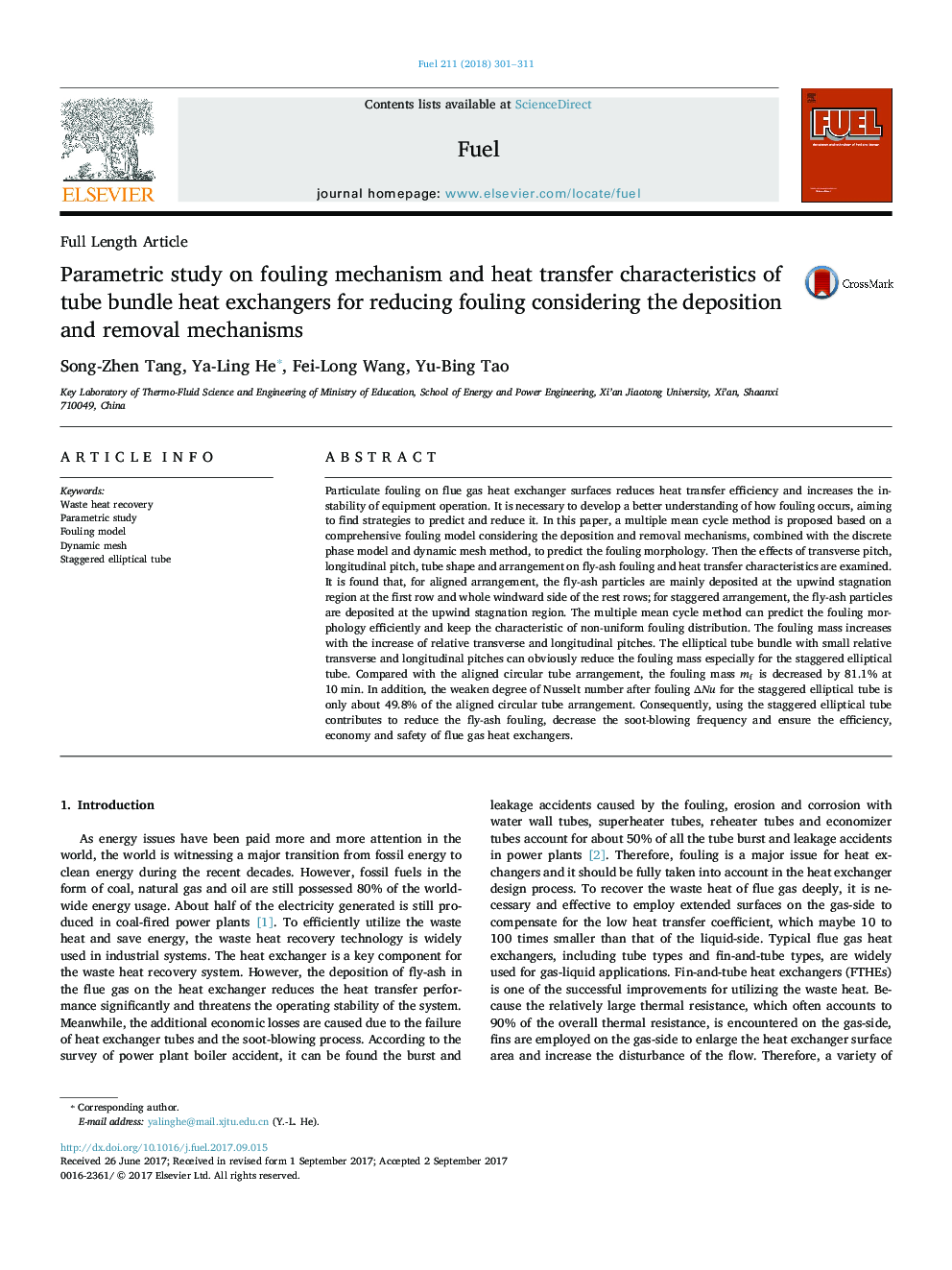| Article ID | Journal | Published Year | Pages | File Type |
|---|---|---|---|---|
| 6473462 | Fuel | 2018 | 11 Pages |
â¢Fouling and heat transfer characteristics of a typical heat exchanger are investigated.â¢A multiple mean cycle method is proposed based on a comprehensive fouling model.â¢The effects of geometric parameters are discussed.â¢The staggered elliptical tube is proposed to reduce the fly-ash fouling.
Particulate fouling on flue gas heat exchanger surfaces reduces heat transfer efficiency and increases the instability of equipment operation. It is necessary to develop a better understanding of how fouling occurs, aiming to find strategies to predict and reduce it. In this paper, a multiple mean cycle method is proposed based on a comprehensive fouling model considering the deposition and removal mechanisms, combined with the discrete phase model and dynamic mesh method, to predict the fouling morphology. Then the effects of transverse pitch, longitudinal pitch, tube shape and arrangement on fly-ash fouling and heat transfer characteristics are examined. It is found that, for aligned arrangement, the fly-ash particles are mainly deposited at the upwind stagnation region at the first row and whole windward side of the rest rows; for staggered arrangement, the fly-ash particles are deposited at the upwind stagnation region. The multiple mean cycle method can predict the fouling morphology efficiently and keep the characteristic of non-uniform fouling distribution. The fouling mass increases with the increase of relative transverse and longitudinal pitches. The elliptical tube bundle with small relative transverse and longitudinal pitches can obviously reduce the fouling mass especially for the staggered elliptical tube. Compared with the aligned circular tube arrangement, the fouling mass mf is decreased by 81.1% at 10Â min. In addition, the weaken degree of Nusselt number after fouling ÎNu for the staggered elliptical tube is only about 49.8% of the aligned circular tube arrangement. Consequently, using the staggered elliptical tube contributes to reduce the fly-ash fouling, decrease the soot-blowing frequency and ensure the efficiency, economy and safety of flue gas heat exchangers.
